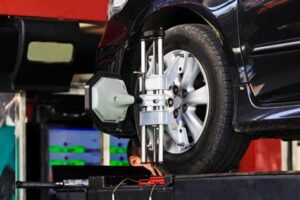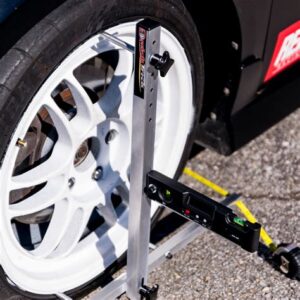Discover the common causes of vehicle pulling, effects of misalignment on tire wear, and the importance of proper inflation and regular wheel balancing.If your car suddenly pulls to the right after getting an alignment and new tires, you’re not alone in experiencing this frustrating issue. Many drivers encounter similar problems, leaving them wondering about the underlying causes and potential solutions. Understanding why your vehicle behaves this way is crucial not only for your driving comfort but also for your safety on the road. In this blog post, we’ll delve into common factors that can lead to a rightward pull, explore the effects of misalignment on tire wear, highlight the importance of maintaining proper tire inflation, discuss how suspension components contribute to alignment, and emphasize the benefits of regular wheel balancing. By the end, you’ll gain valuable insights to ensure your vehicle runs smoothly and efficiently.
Common Causes of Pulling to the Right
Experiencing your vehicle pulling to the right after an alignment and new tires can be frustrating and concerning. It’s essential to understand the potential factors contributing to this issue to maintain both safety and performance. Below are some common causes that might lead to your car’s tendency to veer off course.
- Tire Pressure Imbalance: One of the primary reasons vehicles pull to one side is uneven tire pressure. If the tire on one side has a significantly higher or lower pressure than the other side, it can cause the car to drift.
- Uneven Tire Wear: New tires should provide balanced wear. However, if your previous tires were worn unevenly due to misalignment or suspension issues, the new tires may compensate incorrectly, leading to pulling.
- Misaligned Suspension: Even after a recent alignment, if suspension components are worn or damaged, they can lead to misalignment, causing the vehicle to pull in one direction.
- Brake Drag: If brakes on one side are sticking or dragging, it may create more friction on that side, resulting in pulling to the opposite direction.
- Steering Issues: Problems within the steering system, such as a worn out steering rack or joints, can also lead to inaccurate steering geometry causing the car to pull aside.
Addressing these issues promptly can help ensure your vehicle handles correctly and extends the life of your new tires. Always consult with a qualified mechanic if you experience this problem to diagnose the exact cause and find the appropriate solution.
Regularly checking and maintaining your vehicle’s tire pressure, suspension components, and brakes is essential in preventing such issues from arising in the future. Taking these steps can enhance your driving experience.
Remember, identifying the cause of pulling is critical not only for comfort but also for your safety on the road. Don’t hesitate to reach out for professional help
Effects of Misalignment on Tire Wear
Misalignment can have a profound effect on the wear of your vehicle’s tires. When your wheels are not aligned properly, it causes uneven pressure on the tires, leading to premature wear. This issue is not only problematic for the tires themselves but can also compromise safety and performance.
The most common sign of misalignment is uneven tire wear. The inner or outer edges of the tire may wear away faster than the center. This can lead to a situation where you might have to replace your tires much sooner than expected, which results in increased maintenance costs over time.
Additionally, misalignment can significantly impact fuel efficiency. When the tires are not aligned correctly, they create more friction with the road surface, forcing the engine to work harder. This can lead to lower miles per gallon (MPG) and ultimately cost you more at the pump. Regularly checking your alignment can help prevent these negative effects on tire wear and overall vehicle performance.
Importance of Proper Tire Inflation
Maintaining proper tire inflation is crucial for optimal vehicle performance and safety. When your tires are correctly inflated, they provide better traction and handling, which is essential for a comfortable driving experience. Under-inflated tires can lead to various issues, including increased fuel consumption and reduced tire lifespan.
Over time, tires naturally lose air pressure due to microscopic pores in the rubber, as well as temperature variations. It’s vital to check your tire pressure regularly, especially before long trips. Many vehicles come equipped with a Tire Pressure Monitoring System (TPMS) that can alert you of under-inflation, but it’s always a good habit to perform manual checks as well.
Furthermore, properly inflated tires contribute to safety on the road. They enhance braking performance, help maintain vehicle control, and reduce the likelihood of blowouts. Investing a few minutes each month to ensure your tires are at the correct pressure can save you money in repairs and improve overall vehicle safety.
Role of Suspension Components in Alignment
When it comes to ensuring that your vehicle drives smoothly and remains safe on the road, suspension components play a critical role in maintaining proper alignment. These parts are not just there for comfort; they significantly influence how your car behaves under different driving conditions. Key components such as control arms, struts, and tie rods directly affect the vehicle’s alignment and its ability to track straight.
Misalignment can occur if any of these suspension parts are damaged or worn out. For instance, if the control arm bushings are deteriorated, it can lead to a shift in alignment, causing your car to pull to the right or left. Moreover, if your tie rods are failing, they can throw off the steering angle, resulting in uneven tire wear and the frustrating sensation of your vehicle veering to one side.
Furthermore, regular inspection and maintenance of suspension components are essential. This not only helps keep your vehicle aligned properly but also enhances its overall performance. By ensuring that these components are in prime condition, you can prevent issues like abnormal tire wear, improve handling, and prolong the
Benefits of Regular Wheel Balancing
Regular wheel balancing is a crucial aspect of vehicle maintenance that often gets overlooked. When wheels are properly balanced, it ensures an even distribution of weight and minimizes vibrations. This not only enhances the driving experience but also prolongs the lifespan of your tires.
One of the key benefits of regular wheel balancing is the improvement in tire wear. When tires are not balanced correctly, they can wear unevenly, which may lead to more frequent replacements. Regular balancing keeps your tires in optimal condition, ensuring they wear evenly and last longer.
Additionally, proper wheel balancing contributes to better fuel efficiency. When your tires are well-balanced, your vehicle requires less energy to maintain speed, resulting in improved gas mileage. This can lead to significant cost savings over time.
| Benefit | Description |
|---|---|
| Enhanced Driving Comfort | Minimizes vibrations for a smoother ride. |
| Increased Tire Lifespan | Ensures even tire wear and prolongs tire life. |
| Improved Fuel Efficiency | Reduces energy consumption, leading to better gas mileage. |
In summary, the benefits of regular wheel balancing extend beyond just smooth driving; they encompass safety, cost-effectiveness, and the longevity of your tires. Ignoring this essential maintenance item can lead to a range of issues, making it a wise investment for any vehicle owner.
Frequently Asked Questions
What could cause a car to pull to the right after an alignment?
Several issues can cause this, including improper alignment settings, worn suspension components, or uneven tire pressures.
How can I check if my tire pressure is uneven?
You can check tire pressure using a tire pressure gauge. Ensure all tires are inflated to the manufacturer-recommended PSI, typically found in the owner’s manual or on a sticker inside the driver’s door.
Is it possible that the new tires are defective?
Yes, it’s possible. Defective tires can have alignment issues, uneven wear, or manufacturing defects. It’s advisable to inspect the tires or have them professionally evaluated.
What should I do if I suspect a problem with the suspension?
If you suspect a suspension issue, it’s best to take your vehicle to a certified mechanic for a thorough inspection, as suspension problems can lead to safety hazards while driving.
Can road conditions affect the alignment or pulling of the vehicle?
Yes, uneven road conditions, potholes, and curbs can affect your car’s alignment and tire wear, leading to pulling or drifting to one side.
How often should I get my alignment checked?
It’s generally recommended to check your alignment every 6,000 miles or whenever you notice signs of pulling, uneven tire wear, or after hitting a significant obstacle.
What is the difference between a wheel alignment and wheel balancing?
Wheel alignment involves adjusting the angles of the wheels to ensure they are parallel and correctly positioned on the vehicle, while wheel balancing focuses on equal weight distribution around the wheel and tire assembly to eliminate vibrations.





